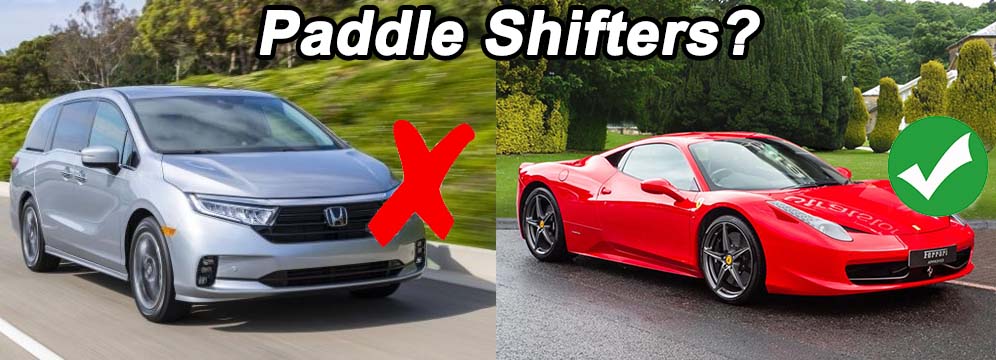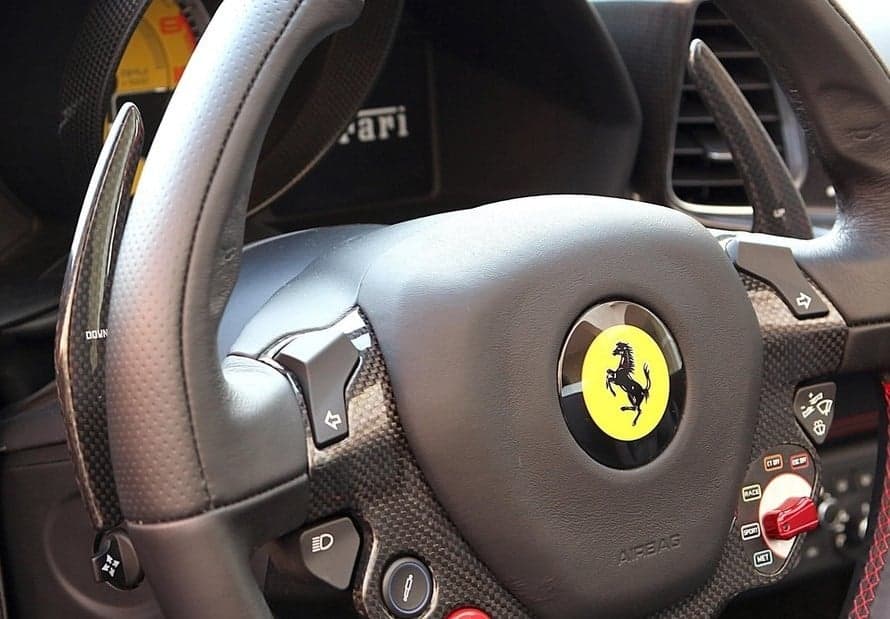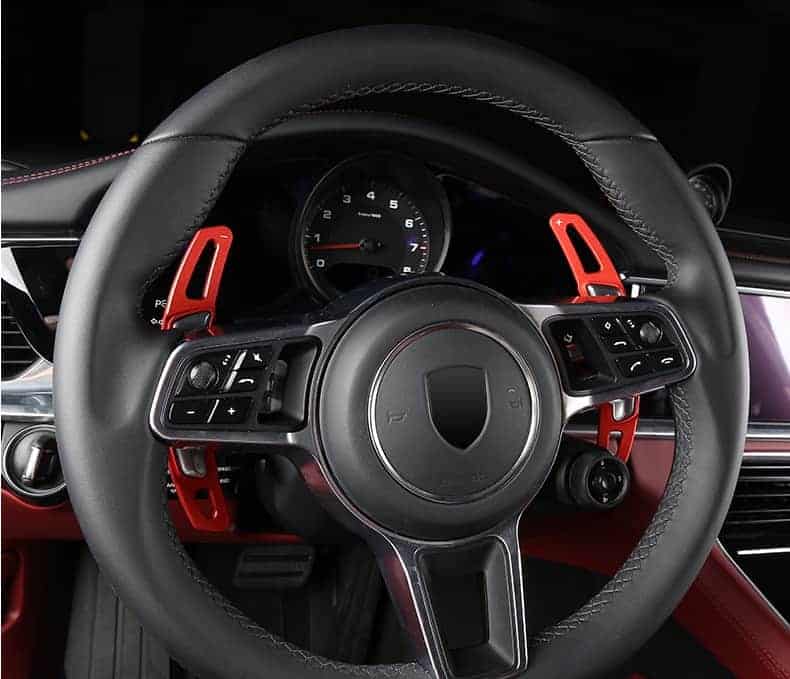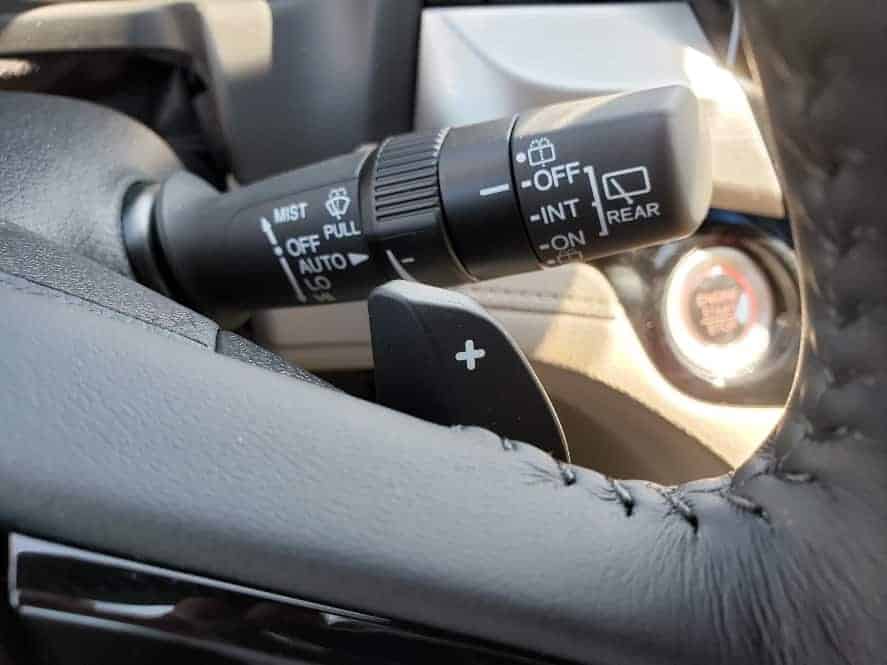What’s the Point of Paddle Shifters?

If you’ve looked into buying a new car, truck, SUV or van with an automatic transmission lately, there’s a good chance that you’ll have come across paddle shifters. Whether you have or you haven’t come across them yet, do you know what paddle shifters are, do you know what paddle shifters are for, and do you need them anyway?
Paddle shifters are a pair of levers situated on or near the steering wheel of a vehicle that allows for quick manual shifting up and down the gears of an automatic transmission. One paddle is used for going up through the gears and the other is for shifting down the gears. They were originally developed in Formula One and soon found their way into expensive sports cars like Ferraris and Lamborghinis, but they can now be found in vehicles of all types and in most price brackets.
What are Paddle Shifters?
When you look at a new vehicle with an automatic transmission these days, whether it’s a regular hydraulic system, a dual-clutch setup, or even a continuously variable transmission (CVT), there’s every chance it will be available with paddle shifters.
They might not be on the lower specification versions, but they’re an increasingly common feature of higher trim levels of all sorts of different vehicles. Yes, you can even find paddle shifters in a Honda Odyssey minivan these days.
The whole point of paddle shifters is they allow you to manually shift up and down the gears of an automatic transmission. They’re a sort of halfway house between an automatic and a stick shift transmission, and they allow you to stay in a gear longer or shift quicker than the software of the automatic system might want to under normal circumstances.
Unlike a fully manual transmission system with a stick, you don’t have a clutch to engage before changing gear and that makes paddle shifters easier and more convenient than a fully manual setup. However, paddle shifters only allow for sequential shifting, which means you have to go up and down the gears one at a time and you can’t skip a gear.
With a fully manual transmission you can engage the clutch and shift down from sixth gear straight to first if you want, but with paddle shifters, you’ll have to go from sixth to fifth, fourth, third, and second before you can then engage first gear.

Is it bad to use paddle shifters?
While you can do some serious damage to a manual transmission if you engage the wrong gear at the wrong time, it’s impossible to do any damage to your transmission by manually selecting the wrong gear with paddle shifters. You could shift up a little early and stunt the car’s acceleration, but as you shift down, engine braking will take care of slowing you down to the appropriate speed for that gear. Paddle shifters are pretty smart systems, and I would even go as far as to say they’re foolproof.
Are paddle shifters faster than a manual?
It’s impossible to put exact timings on how quick paddle shifters and stick-shifts are for changing gears because they’re all different and so are the drivers operating them. However, if you were to do a straight comparison between a vehicle with manual transmission and the same vehicle with an automatic transmission and paddle shifters, there’s no doubt that it would be quicker to shift up or down gears with the paddle shifters. Paddle shifters are probably not twice as fast as a stick, but they won’t be too far away from that mark.
Do paddle shifters save gas?
It used to be the case years ago that cars with manual transmissions were better on gas than automatics, but nowadays the opposite is generally true. Remember, paddle shifters are fitted to vehicles with automatic transmissions, so the EPA-estimated fuel economy ratings for models with paddle shifters will usually be better than the same vehicle with a manual transmission.
Unfortunately, paddle shifters do not save gas as they allow the driver to override the automatic transmission’s programming and drive the vehicle more aggressively, which inevitably means using more gas than if the automatic transmission software was allowed to do its thing.
When should you shift gears with paddle shifters?
If you’re an experienced driver you’ll probably know instinctively when you need to shift up or down gears with your paddle shifters due to the sound of the engine, but modern automatics allow even the least experienced drivers to use paddle shifters effectively.
Most vehicles with paddle shifters will have an indicator on the dash that will tell you when you need to shift up or down, so anyone who can drive a car can use paddle shifters.
Of course, if you’re relying on your vehicle’s computer system to tell you when to shift up or down a gear with the paddle shifters, why not leave it in automatic and let the transmission shift gears itself? The whole point of paddle shifters is to allow the driver to shift when they want, and not when the car’s software thinks it’s most appropriate.
Do paddle shifters help you drive faster?

Paddle shifters can help you to drive a car with an automatic transmission faster by allowing you to stay in a gear longer without shifting up than the automatic system would if you left it to it. This isn’t always the case though.
‘ve driven cars with paddle shifters and tried to stay in a lower gear to keep accelerating and the system has overridden my wishes and changed up anyway. Experiencing that for the first time was when I started to question the point of paddle shifters in everyday cars.
If you’re aggressive enough with your right foot on the gas pedal in automatic mode it’s unlikely you’ll notice a great deal of difference by swapping to the paddle shifters as modern automatic transmissions are pretty impressive.
Are paddle shifters useful?
Paddle shifters don’t really do a great deal that an automatic transmission can’t do without them, but there are some cases where you might find them useful. One situation where paddle shifters could be useful is if you’re trying to set off on a slippery surface such as a road covered in snow or ice.
If you’re driving a regular automatic it will set off in first gear and the wheels could spin. With paddle shifters, you could start off in second gear and that could prevent the wheel spin you’d get trying to set off in first.
Also, paddle shifters allow you to drop down a gear or two and accelerate away during an overtaking maneuver. Then again, most automatics will have a “kick-down” feature built-in that will drop you down a gear when you stomp on the gas pedal anyway.
What car had paddle shifters first?
The first road car to be offered with paddle shifters was the Ferrari 355 in 1997. The F355 was fitted with a transmission called “F1” which made it the first production car for the road to utilize the system created by Ferrari for its Formula One race cars. The fact the Ferrari F355 and not something like a Ford Fusion was the first car to have paddle shifters tells you a lot about the system and what it was designed for.
What cars have paddle shifters today?
It would probably be quicker and easier to compile a list of modern cars that are not available with paddle shifters these days than to come up with a list including all those models that do offer the feature. Paddle shifters used to be the preserve of exotic, high-end supercars like Ferrari, Lamborghini, and Aston Martin. These days you can find them in a Honda Fit, a Smart ForTwo, and even in minivans.
Can you have paddle shifters with a manual transmission?
There are manual transmissions that are operated using paddle shifters, but you’ll probably only find them in dedicated race cars for the track and they’ll still have a clutch pedal. These will usually be referred to as semi-automatic transmissions and they’ll use paddle shifters for changing gear instead of an H-pattern stick shift or a sequential gear lever.
The only time these units will require the use of the clutch pedal will be when setting off from a standing start or for coming to a halt to stop the vehicle from stalling.

What’s the point of paddle shifters?
I’m sure you can see the point of paddle shifters as they allow you an element of manual control you don’t normally have with an automatic transmission but you can still drive in fully automatic mode when you want to. An automatic transmission with paddle shifters is probably the best of both manual and automatic worlds, but I will add a caveat here.
The last two new cars I’ve had have both been equipped with paddle shifters. The first was a Kia Sportage with a seven-speed dual-clutch transmission and the last one was a Mercedes C-Class diesel with a nine-speed automatic transmission.
I only used the paddle shifters once in the Kia when I first took delivery. That was the one where I tried to hold it in second gear to accelerate faster and the system decided to change up anyway as it thought the engine revs meant it was necessary.
The system in the Mercedes was far superior and far more responsive than the one I had in the Sportage, but I soon found the automatic system was more than up to the job in every circumstance and I never used the paddle shifters again. If you take those two vehicles together I had them for a period of four years, and if memory serves me correctly, I only used the paddle shifters on four occasions.
Unless you’re driving a supercar like an Audi R8, Lamborghini Huracan, or a Ferrari 458, I can’t really see the point or the need for paddle shifters. If anyone reading this has a regular mass-market vehicle with paddle shifters, just stop for a minute and think how often you’ve used them.
Most people will have a play with them when they first get a vehicle with paddle shifters, but the vast majority will soon realize they’re little more than a gimmick and they’ll stick to letting the automatic transmission do its stuff 99% of the time.
